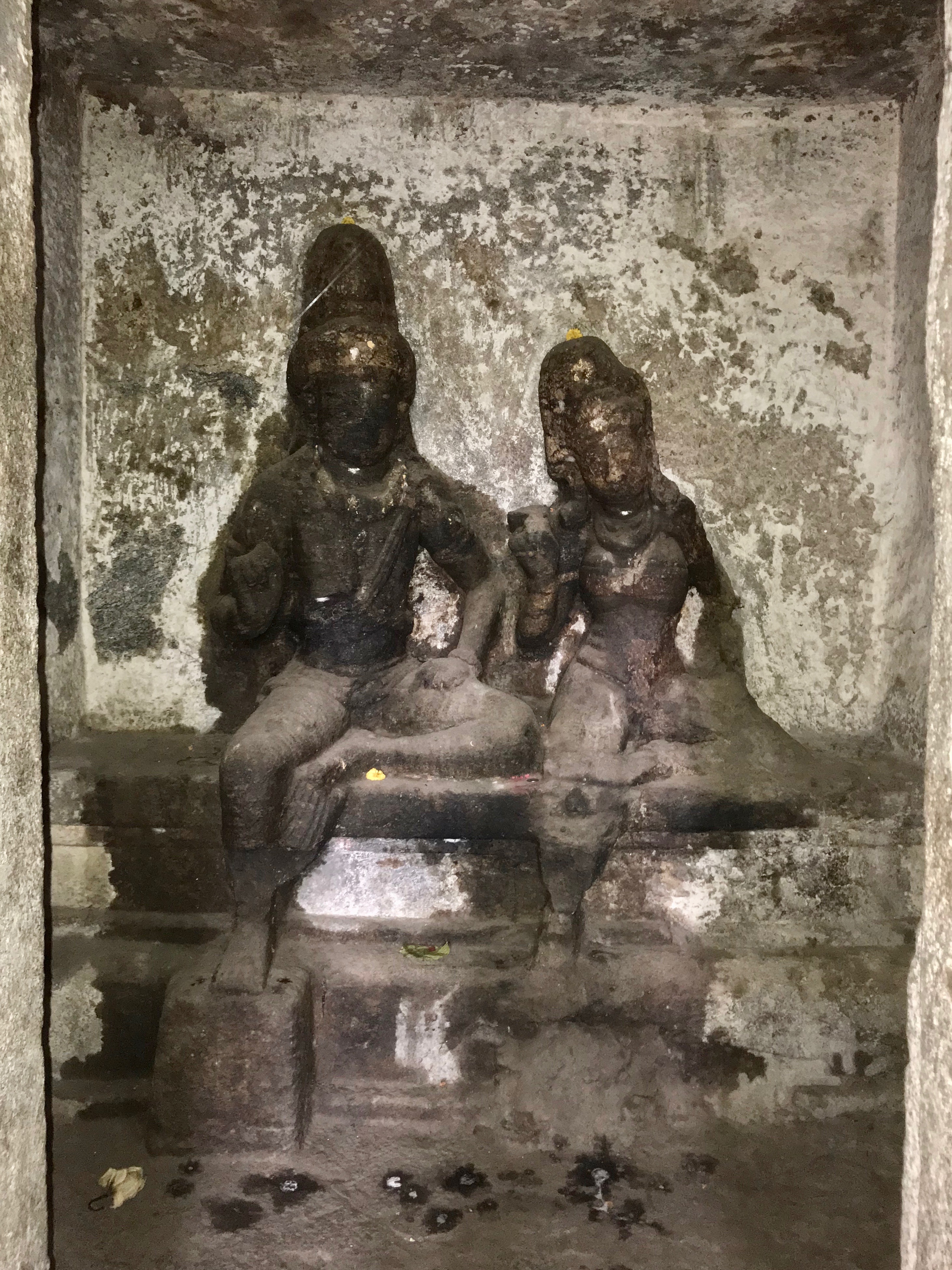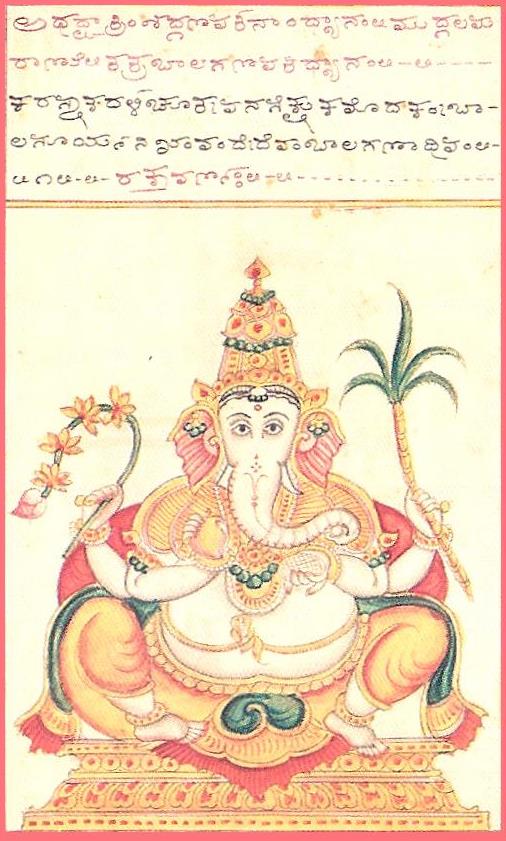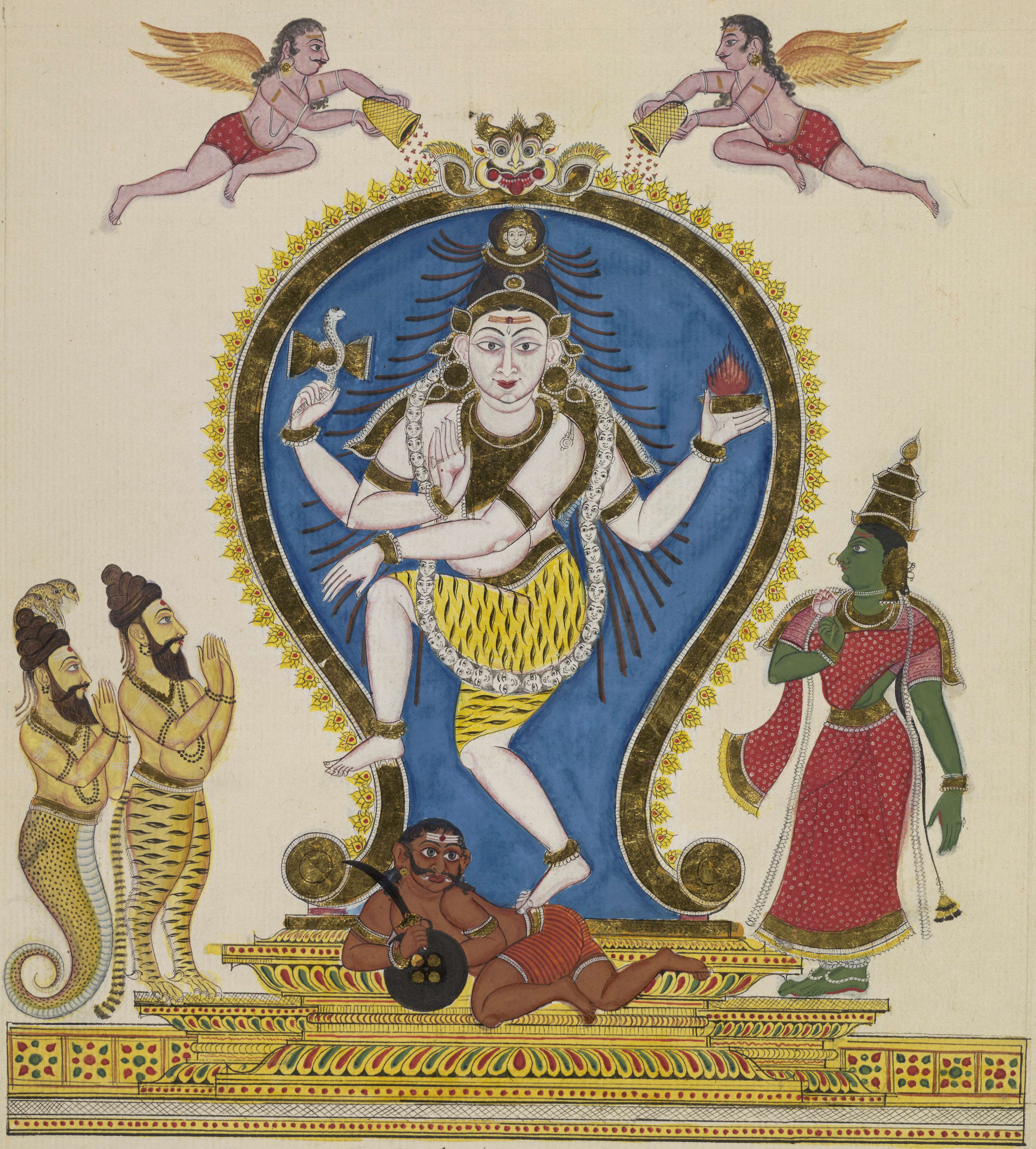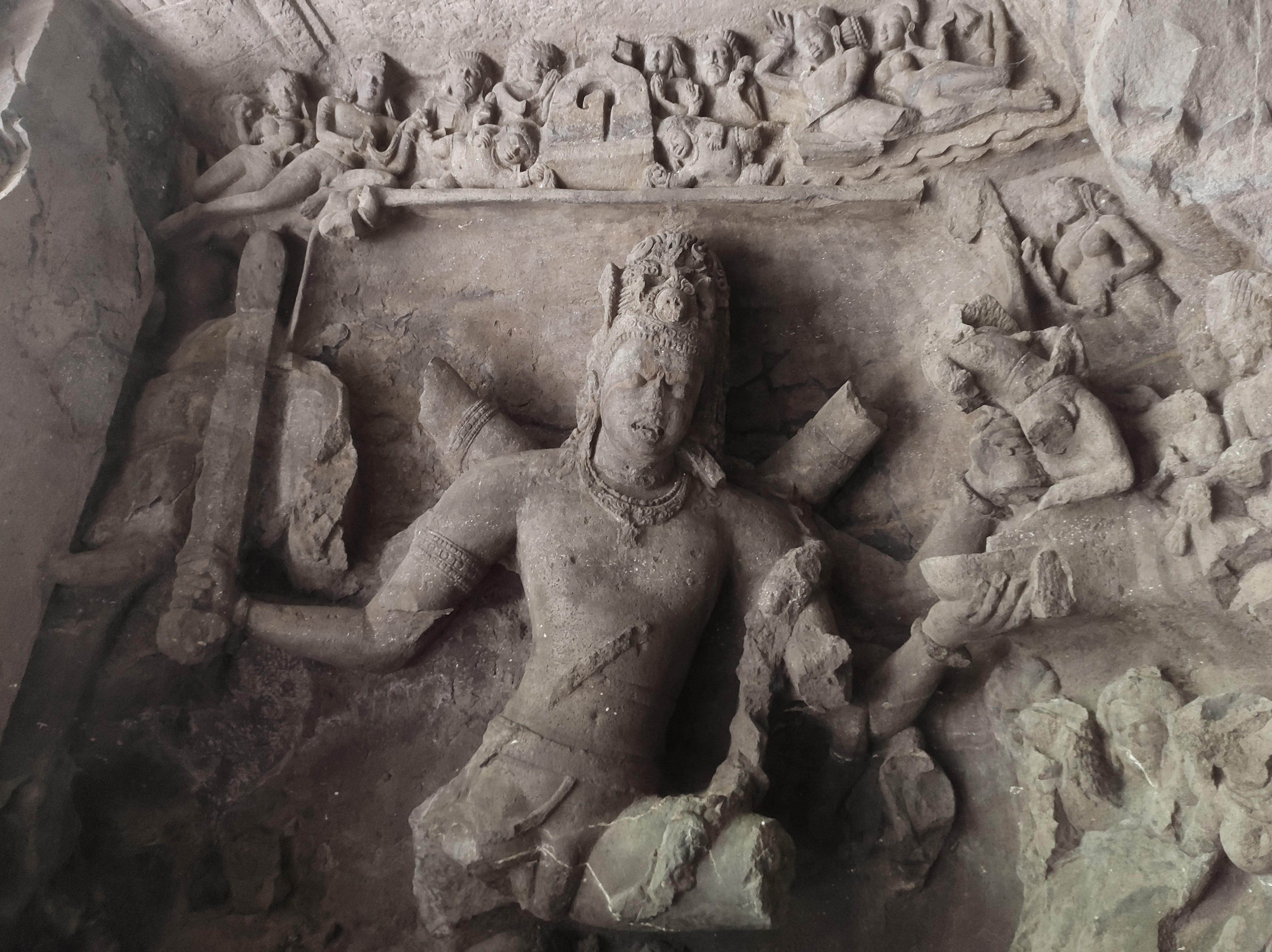|
Uchchhishta Ganapathy Temple
Uchchhishta Ganapathy Temple is an Uchchhishta Ganapati temple situated in Tirunelveli in the State of Tamil Nadu, in India. It is said to be the biggest Vinayagar temple in Asia. Location It is located at an altitude of about 84 m above the mean sea level with the geographic coordinates of . It is situated on the banks of river Tamirabharani, in the neighbourhood of Manimoortheeswaram, just 2 km away from Tirunelveli Junction railway station. Other deities Nellaiappar (Shiva), Gandhimathi Amman (Parvati as consort of Nellaiappar), Subramaniya with his consorts Valli and Deivanai, Dakshinamurthy, Chandikeswarar, Swarna Akarshana Bhairavar, Sage Patanjali, Sage Vyagrabathar and 31 forms of Ganesha are the other deities found in this temple with the main deity Uchchhishta Ganapathy. Festivals Vinayagar Chaturdi is celebrated every year for ten days. In this 1,000 year old temple, in the year 2023, Vinayagar Chaturdi was celebrated on 2023-09-18 in a grand ... [...More Info...] [...Related Items...] OR: [Wikipedia] [Google] [Baidu] |
Tirunelveli
Tirunelveli (), also known as Nellai and historically (during British rule) as Tinnevelly, is a major city in the Indian state of Tamil Nadu. It is the administrative headquarters of the Tirunelveli District. It is the fourth-largest municipal corporation in the state after Chennai, Coimbatore, and Madurai. Tirunelveli is located southwest of the state capital Chennai, away from Thoothukudi, and from Kanyakumari. The downtown is located on the west bank of the Thamirabarani River; its twin Palayamkottai is on the east bank. Tirunelveli and its neighbourhood, Palayamkottai, have been called the Oxford of South India for their colleges. It has several important government offices. Tirunelveli is an ancient city, recorded to be more than two millennia old. It has been ruled at different times by the Early Pandyas, the Cheras, the Medieval Cholas and Later Cholas, the later Pandyas, the Vijayanagara Empire and the British. The Polygar War, involving Palaiyakkarars ... [...More Info...] [...Related Items...] OR: [Wikipedia] [Google] [Baidu] |
Devasena
Devasena (, , ) is the Hindu goddess of aspirations, and the consort of the war god Kartikeya (Murugan). She is also known as Devayanai, Deivanai, and Deivayanai in Tamil texts. Her name is also spelled as Teyvanai or Tevayanai (). Devasena is described as the daughter of the ''Prajapati'' Daksha in the ''Mahabharata'', while some Sanskrit scriptures consider her as the daughter of Indra, the king of the devas (gods), and his wife Shachi. In the Tamil iteration of the Skanda Purana, she is portrayed as the daughter of the god Vishnu, who is later adopted by Indra. She is betrothed to Kartikeya by Indra, when he becomes the commander-in-chief of the devas. In Tamil accounts, Devasena is generally depicted as an antithesis of Valli, her sister-wife; together they complete the deity. Devasena is generally depicted with Murugan, and is often also accompanied by Valli. In Tamil Nadu, Devasena does not enjoy independent worship, but is venerated as Murugan's consort in most of ... [...More Info...] [...Related Items...] OR: [Wikipedia] [Google] [Baidu] |
Government Of Tamil Nadu
The Government of Tamil Nadu () is the administrative body responsible for the governance of the Indian state of Tamil Nadu. Chennai is the capital of the state and houses the state executive, legislature and head of judiciary. Under the Constitution of India, ''de jure'' executive authority lies with the governor, although this authority is exercised only by, or on the advice of, the chief minister, the '' de facto'' authority and the cabinet. Following elections to the Tamil Nadu Legislative Assembly, the state's governor usually invites the party (or coalition) with a majority of seats to form the government. The governor appoints the chief minister, whose council of ministers are collectively responsible to the assembly. Legislative assembly elections are held every five years to elect a new assembly, unless there is a successful vote of no confidence in the government or a two-thirds vote for a snap election in the assembly, in which case an election may be held soon ... [...More Info...] [...Related Items...] OR: [Wikipedia] [Google] [Baidu] |
Hindu Religious And Charitable Endowments Department
The Hindu Religious and Charitable Endowments Department of the Government of Tamil Nadu manages and controls the temple administration within the state. The Tamil Nadu Hindu Religious and Charitable Endowments Act XXII of 1959 controls 36,425 temples, 56mathas or religious orders (and 47 temples belonging to mathas), 1,721 specific endowments and 189 trusts. History In 1923, the ''Madras Hindu Religious Endowments Act'' was passed by Madras Presidency. In 1925, the Government constituted "The Hindu Religious and Charitable Endowments Board" consisting of a president and two to four commissioners nominated by the government to function as a statutory body. Subsequently, it was modified and in 1960 it became The Hindu Religious and Charitable Endowments Department by Tamil Nadu Hindu Religious and Charitable Endowments Act XXII of 1959 which came into force with effect from 28 April 1960, with C. P. Ramaswami Iyer serving as chairman. Since 1991, religious and spiritual leade ... [...More Info...] [...Related Items...] OR: [Wikipedia] [Google] [Baidu] |
Ganesh Chaturthi
Ganesh Chaturthi (ISO: ), also known as Vinayaka Chaturthi () or Vinayaka Chavithi () or Vinayagar Chaturthi (), is a Hindu festival celebrating the birthday of Hindu deity Ganesh. The festival is marked with the installation of Ganesha's ''murtis'' (devotional representations of a deity) privately in homes and publicly on elaborate pandals (temporary stages). Observances include chanting of Vedic hymns and Hindu texts, such as prayers and ''vrata'' (fasting). Offerings and '' prasada'' from the daily prayers, that are distributed from the pandal to the community, include sweets such as '' modak'' as it is believed to be a favourite of Ganesha. The festival ends on the tenth day after start, when the ''murti'' is carried in a public procession with music and group chanting, then immersed in a nearby body of water such as a river or sea, called ''visarjana'' on the day of Ananta Chaturdashi. In Mumbai alone, around 150,000 murtis are immersed annually. ... [...More Info...] [...Related Items...] OR: [Wikipedia] [Google] [Baidu] |
Ganesha
Ganesha or Ganesh (, , ), also known as Ganapati, Vinayaka and Pillaiyar, is one of the best-known and most worshipped Deva (Hinduism), deities in the Hindu deities, Hindu pantheon and is the Supreme God in the Ganapatya sect. His depictions are found throughout India. Hindu denominations worship him regardless of affiliations. Devotion to Ganesha is widely diffused and extends Ganesha in world religions, to Jains and Buddhists and beyond India. Although Ganesha has many attributes, he is readily identified by his Asiatic Elephant, elephant head and four arms. He is widely revered, more specifically, as the remover of obstacles and bringer of good luck; the patron of The arts, arts and Science, sciences; and the Deva (Hinduism), deva of intellect and wisdom. As the god of beginnings, he is honoured at the start of rites and ceremonies. Ganesha is also invoked during writing sessions as a patron of letters and learning., Vigna means obstacles Nasha means destroy. These ideas ar ... [...More Info...] [...Related Items...] OR: [Wikipedia] [Google] [Baidu] |
Thirty-two Forms Of Ganesha
Thirty-two forms of Ganesha are mentioned frequently in devotional literature related to the Hindu god Ganesha. The Ganesha-centric scripture ''Mudgala Purana'' is the first to list them. Detailed descriptions are included in the ''Shivanidhi'' portion of the 19th-century Kannada ''Sritattvanidhi''. There are also sculptural representations of these thirty-two forms in the temples at Nanjangud and Chāmarājanagar (both in Mysore district, Karnataka), done about the same time as the paintings were done and also at the direction of the same monarch.Ramachandra Rao, p. vi. Each of the thirty-two illustrations is accompanied by a short Sanskrit meditation verse ('), written in Kannada script. The meditation verses list the attributes of each form. The text says that these meditation forms are from the ''Mudgala Purana''. In his review of how the iconographic forms of Ganapati shown in the Sritattvanidhi compare with those known from other sources, Martin-Dubost notes that the Srita ... [...More Info...] [...Related Items...] OR: [Wikipedia] [Google] [Baidu] |
Vyaghrapada
Vyaghrapada () is a sage featured in Hindu literature. Legends According to one legend, Vyaghrapada was entrusted with the task of picking up fresh flowers, untouched even by honeybees, for offering to Shiva in his aspect as Nataraja in the temple complex of Chidambaram, located in the Indian state of Tamil Nadu. While plucking the flowers, Vyaghrapada was wounded on account of thorns and sharp stones. Shiva conferred on him feet of tigers to relieve him of his pain. Now bearing tiger's feet, the sage easily moved from place to place, including climbing rough trees to pluck fresh flowers untouched even by the honeybees. Both the sages Patanjali and Vyaghrapada venerated Shiva, and in response, the deity performed the ananda tandava, his dance of bliss. According to another legend, Sage Vyaghrapada is associated with the king known as Lokeshavikrama, whom he adopts as his son, as described in a sthala purana. Other places associated with Vyaghrapada In addition to Chidambaram, ... [...More Info...] [...Related Items...] OR: [Wikipedia] [Google] [Baidu] |
Patanjali
Patanjali (, , ; also called Gonardiya or Gonikaputra) was the name of one or more author(s), mystic(s) and philosopher(s) in ancient India. His name is recorded as an author and compiler of a number of Sanskrit works. The greatest of these are the '' Yoga Sutras'', a classical yoga text. Estimates based on analysis of this work suggests that its author(s) may have lived between the 2nd century BCE and the 5th century CE. An author of the same name is credited with the authorship of the classic text on Sanskrit grammar named '' Mahābhāṣya'', that is firmly datable to the 2nd century BCE, and authorship of medical texts possibly dating from 8th-10th centuries CE. The two works, ''Mahābhāṣya'' and ''Yoga Sutras'', are completely different in subject matter, and Indologist Louis Renou has shown that there are significant differences in language, grammar and vocabulary. Before the time of Bhoja (11th century), no known text conflates the identity of the two authors. The ... [...More Info...] [...Related Items...] OR: [Wikipedia] [Google] [Baidu] |
Bhairava
Bhairava (, ), or Kāla Bhairava, is a Shaivite and Vajrayāna deity worshipped by Hindus and Buddhists. In Shaivism, he is a powerful manifestation, or avatar, of Shiva.Kramrisch, Stella (1994). ''The Presence of Śiva''. Princeton, NJ: Princeton University Press. p. 471. In the tradition of Kashmir Shaivism, Bhairava represents the Supreme Reality, synonymous to Para Brahman. Generally in Hinduism, Bhairava is also called Dandapāni (" e who holds thedanda in ishand"), as he holds a rod or ''danda'' to punish sinners, and Svaśva, meaning, "he whose vehicle is a dog". In Vajrayana Buddhism, he is considered a fierce emanation of boddhisatva Mañjuśrī, and also called Heruka, Vajrabhairava, Mahākāla and Yamantaka. Bhairava is worshipped throughout India, Nepal, Indonesia, Sri Lanka, and Japan, as well as in Tibetan Buddhism. Etymology Bhairava originates from the word ''bhīru'', which means "fearsome". Bhairava means "terribly fearsome form". It is also kn ... [...More Info...] [...Related Items...] OR: [Wikipedia] [Google] [Baidu] |
Chandeshvara Nayanar
Chandesha or Canda or Chandikeshwara is one of the 63 Nayanars. Processional bronze images of him generally show him as a boy, with entwined locks of hair, standing with his hands in Añjali Mudrā and with an axe in the crook of his arm. In the Shaiva temples of South India, his shrine is positioned within the first enclosure wall of the temple complex and to the North East of the lingam. He is there typically shown seated, with one leg dangling downwards, a hand on one thigh and an axe clasped in the other. He faces inwards towards the main temple wall. He is depicted as deeply lost in meditation, and devotees snap their fingers or clap their hands to attract his attention. Another explanation, since he is considered to be the guardian of the temple belongings, is that devotees clap their hands to show that they are leaving the temple empty-handed. It is also customary to leave even the sacred ash inside the temple itself. His original role was probably that of recipient of ''ni ... [...More Info...] [...Related Items...] OR: [Wikipedia] [Google] [Baidu] |
Dakshinamurti
Dakshinamurti () is an aspect of the Hindu god Shiva as a guru (teacher). He is regarded to be the personification of the supreme or the ultimate awareness, understanding, and knowledge. Dakshinamurti represents Shiva as a teacher of yoga, music, and wisdom, offering an exposition of the ''Shastras''. He is worshipped as the god of wisdom and meditation. Meaning Dakshinamurti literally means 'one who is facing south ()' in Sanskrit. According to another school of thought 'Dakshinya' means Karuna in Sanskrit or kindness (benevolence). So this manifestation of Shiva is a benevolent teacher who accords wisdom to seekers of salvation. In most of the Shiva temples, the stone image of Dakshinamurti is installed, facing south, on the southern circumambulatory path around the sanctum sanctorum. Depiction In his aspect as Jnana Dakshinamurti, Shiva is generally shown with four arms. He is depicted seated under a banyan tree, facing the south. Shiva is seated upon a deer-throne a ... [...More Info...] [...Related Items...] OR: [Wikipedia] [Google] [Baidu] |







